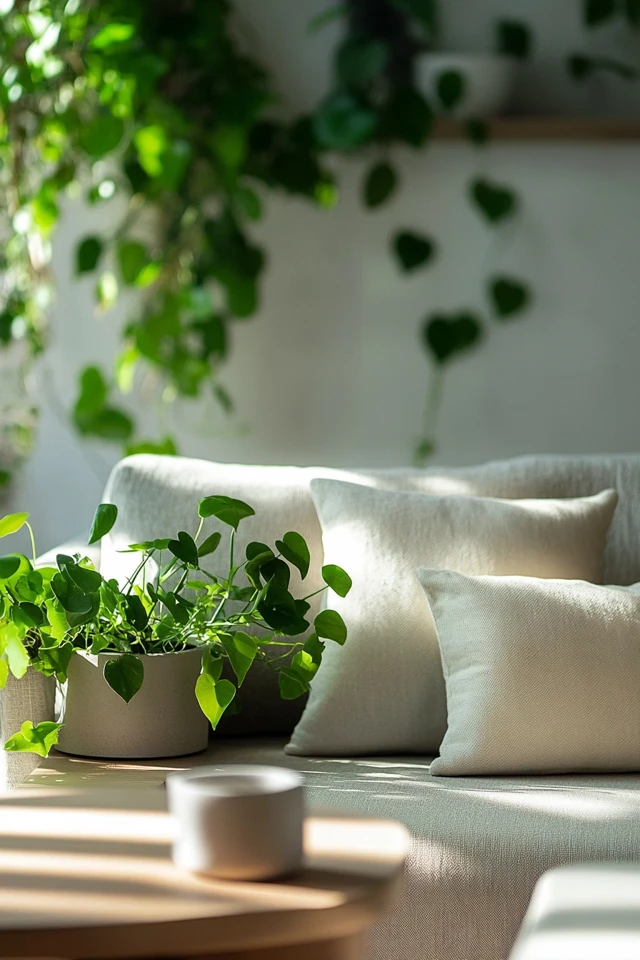Minimalist decor celebrates simplicity, clean lines, and intentional design. Incorporating greenery into this aesthetic not only enhances its visual appeal but also adds warmth, vibrancy, and a touch of nature to your space. Plants are the perfect antidote to sterile interiors, breathing life and tranquility into any room while maintaining the calm, uncluttered essence of minimalism.
I’ll never forget the day I placed a single fiddle-leaf fig tree in the corner of my minimalist living room. It instantly transformed the space. What was once a neutral, serene room became an inviting and lively retreat. Since then, I’ve carefully curated greenery throughout my home, from a cluster of succulents on my desk to trailing pothos on a floating shelf. The plants not only look stunning but also bring a sense of balance and well-being to my minimalist sanctuary.
Here’s how to incorporate greenery into minimalist decor while staying true to its clean and simple aesthetic.
Why Greenery Is Perfect for Minimalist Spaces
- Natural Beauty: Plants add organic texture and color without overwhelming the space.
- Air Purification: Many houseplants improve indoor air quality, making your minimalist space healthier.
- Emotional Benefits: Greenery creates a calming atmosphere, helping reduce stress and promote relaxation.
- Visual Balance: Plants soften the sharp lines and starkness often associated with minimalist decor.
1. Choose Simple and Elegant Planters
Why It Works:
Minimalist decor thrives on simplicity, so the planters you choose should complement the space without drawing too much attention.
How to Incorporate It:
- Opt for neutral-colored planters in materials like ceramic, concrete, or matte metal.
- Use clean, geometric shapes like cylinders, squares, or bowls.
- Avoid overly decorative or colorful pots that can disrupt the minimalist vibe.
Pro Tip: Uniform planters in varying sizes create a cohesive, curated look.
2. Use One Statement Plant Per Room
Why It Works:
A single large plant can act as a focal point, adding impact without cluttering the space.
How to Incorporate It:
- Place a fiddle-leaf fig, rubber plant, or monstera in the corner of a room.
- Use a tall, thin planter to elevate the plant and make a bold statement.
- Keep the surrounding decor minimal to let the plant shine.
Pro Tip: Position your statement plant near natural light to ensure it thrives.
3. Group Small Plants for Visual Interest
Why It Works:
A cluster of small plants can create a subtle, organic centerpiece without overwhelming the design.
How to Incorporate It:
- Group three to five small plants of varying heights and textures on a shelf, coffee table, or windowsill.
- Use a mix of succulents, air plants, and small potted ferns for variety.
- Keep the arrangement balanced by sticking to a single color palette for planters.
Pro Tip: Odd numbers (like three or five) tend to look more natural and balanced than even groupings.
4. Hang Plants for Vertical Impact
Why It Works:
Hanging plants add greenery without taking up valuable floor or surface space, making them ideal for minimalist decor.
How to Incorporate It:
- Install a macramé hanger with a trailing plant like pothos or string of pearls.
- Mount wall planters with sleek, modern designs for a functional and artistic touch.
- Hang plants near windows to maximize natural light.
Pro Tip: Keep the hanging elements simple and neutral to blend seamlessly with your decor.
5. Use Greenery as Functional Decor
Why It Works:
Minimalist design emphasizes functionality, and plants can serve as both decor and practical features.
How to Incorporate It:
- Use a tall plant to visually divide open-plan spaces like a living room and dining area.
- Place herbs like basil, rosemary, or mint in small pots on your kitchen counter for both greenery and utility.
- Add a small, low-maintenance plant like a snake plant to your desk for a productivity boost.
Pro Tip: Choose plants that align with the needs of the space—for example, low-light plants for darker corners.
6. Layer Greenery With Textures and Materials
Why It Works:
Minimalist spaces often rely on texture and material contrasts, and plants naturally complement this approach.
How to Incorporate It:
- Pair lush greenery with soft linen curtains, woven rugs, or smooth wooden surfaces.
- Use plants to soften the look of harder materials like concrete or metal.
- Highlight plants with textured planters like terracotta or matte ceramic.
Pro Tip: Use greenery to bridge the gap between different textures and create a cohesive design.
7. Stick to a Limited Color Palette
Why It Works:
Minimalist decor often revolves around a neutral or monochromatic palette, and plants can add just the right pop of green without overpowering the space.
How to Incorporate It:
- Choose plants with green foliage rather than brightly colored flowers.
- Opt for plants with variegated leaves, like a pothos or calathea, for subtle visual interest.
- Match the planters to your existing decor colors to maintain a cohesive look.
Pro Tip: If your space has a lot of white, the green leaves will create a striking yet balanced contrast.
8. Incorporate Plants Into Shelving Displays
Why It Works:
Adding greenery to shelves brings life to minimalist displays while keeping the surfaces organized.
How to Incorporate It:
- Place small potted plants between books or decor items on open shelves.
- Use trailing plants like ivy or pothos to cascade down the side of a shelf.
- Alternate plants with functional items like storage boxes for a balanced display.
Pro Tip: Leave some empty space on the shelves to avoid overcrowding and maintain a minimalist feel.
9. Create Symmetry With Greenery
Why It Works:
Symmetry adds a sense of order and balance, which is key to minimalist design.
How to Incorporate It:
- Flank a sofa or bed with matching plants in identical planters.
- Use symmetrical arrangements of greenery on a dining table or console.
- Balance a large plant on one side of a room with a similarly sized piece of furniture or decor on the other.
Pro Tip: Symmetry doesn’t have to be rigid—slightly offset elements can make the arrangement feel more natural.
10. Go Vertical With Living Walls
Why It Works:
A living wall adds greenery without taking up any floor or surface space, making it ideal for minimalist interiors.
How to Incorporate It:
- Install a vertical garden using modular wall planters or pocket panels.
- Choose low-maintenance plants like ferns, succulents, or moss for easy care.
- Keep the wall design simple and geometric to align with minimalist principles.
Pro Tip: Position the living wall near a light source and water it with a spray bottle to maintain its beauty.
Picture Gallery
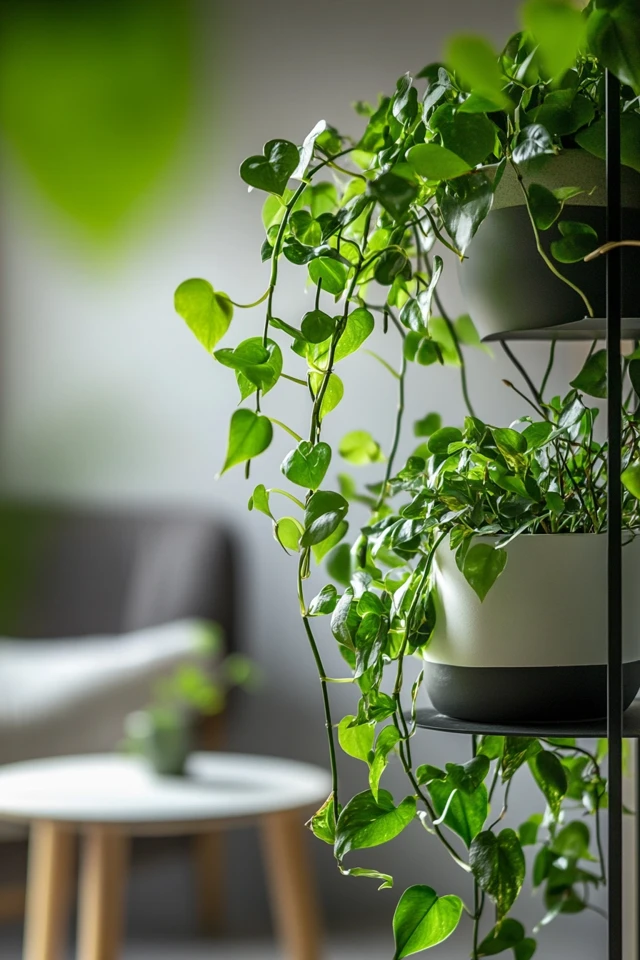
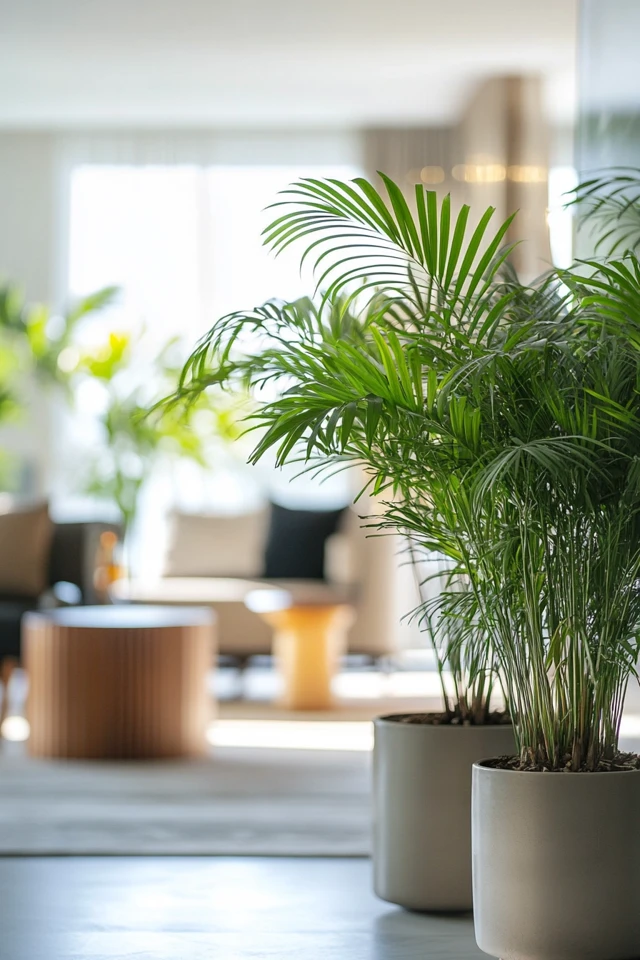
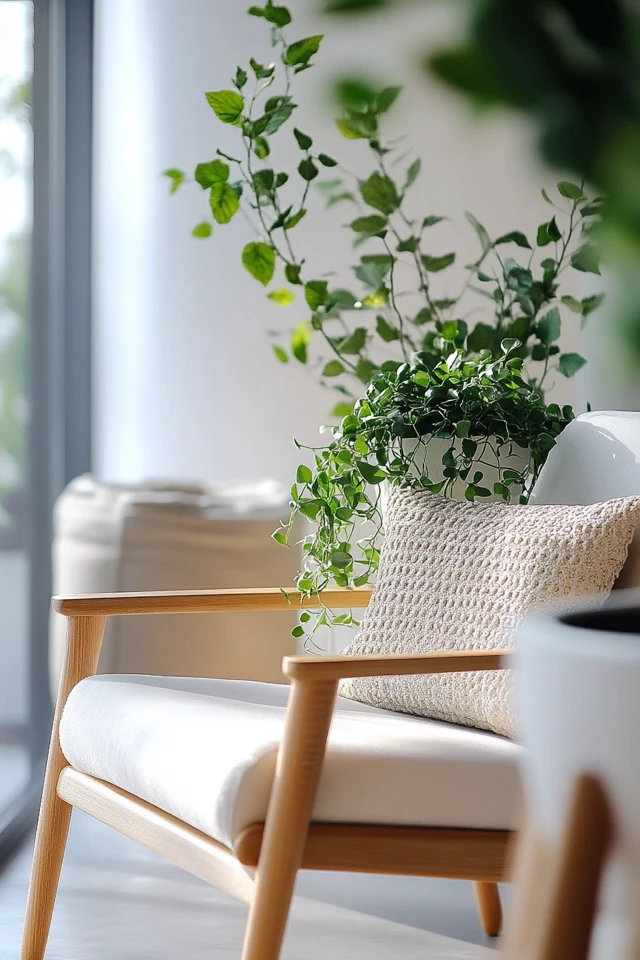
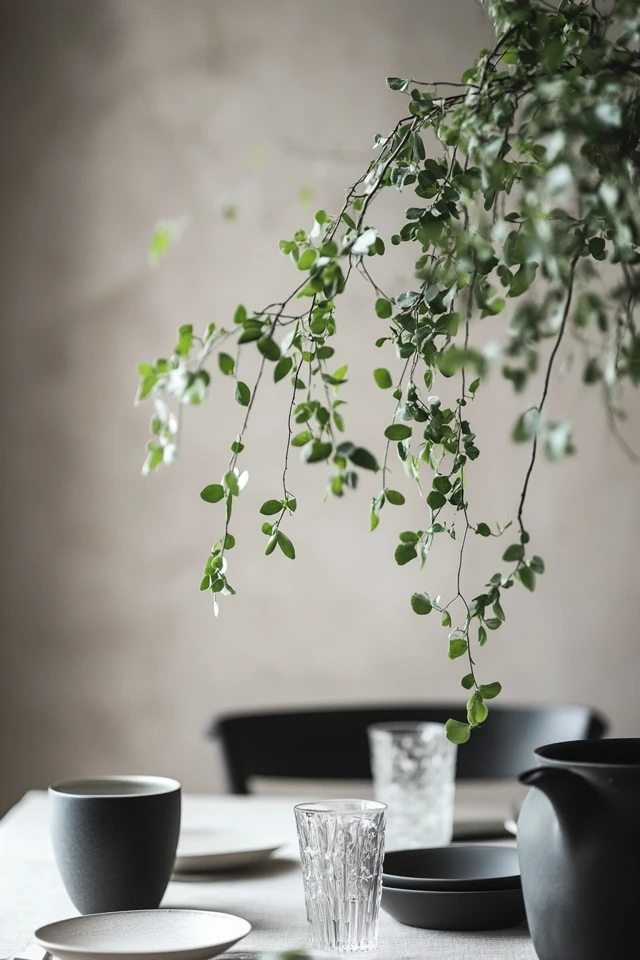
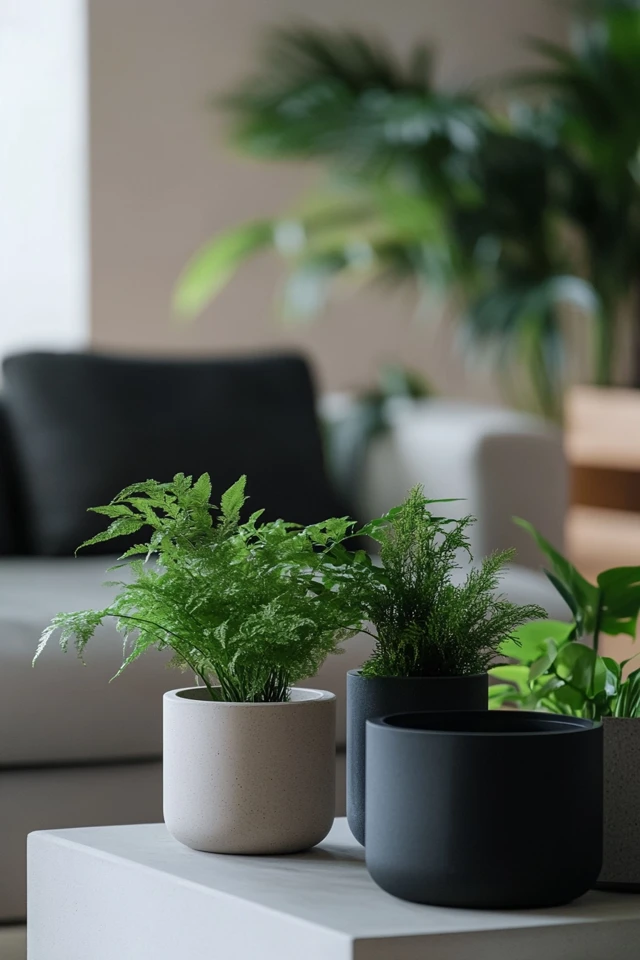
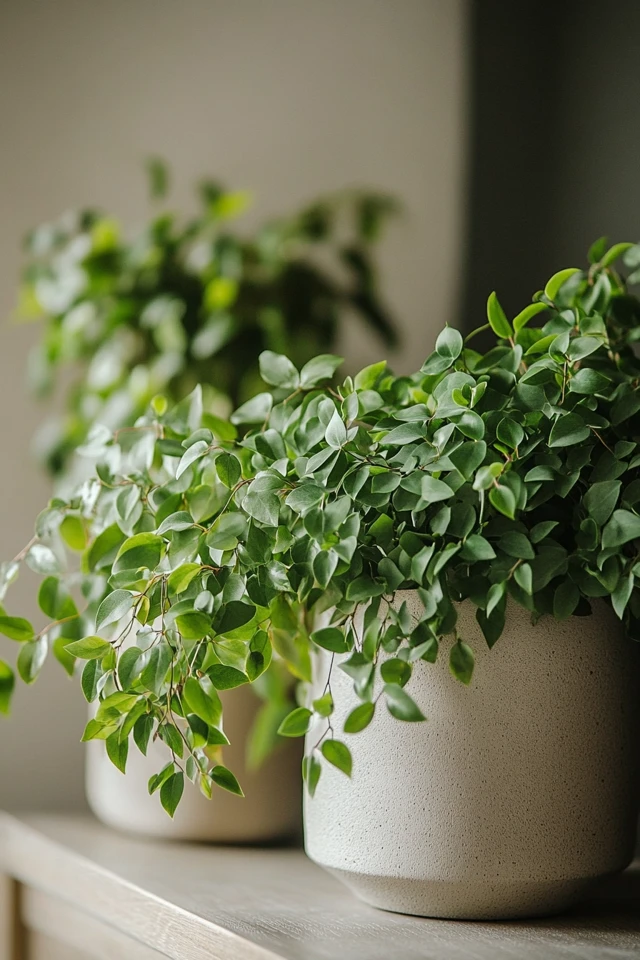
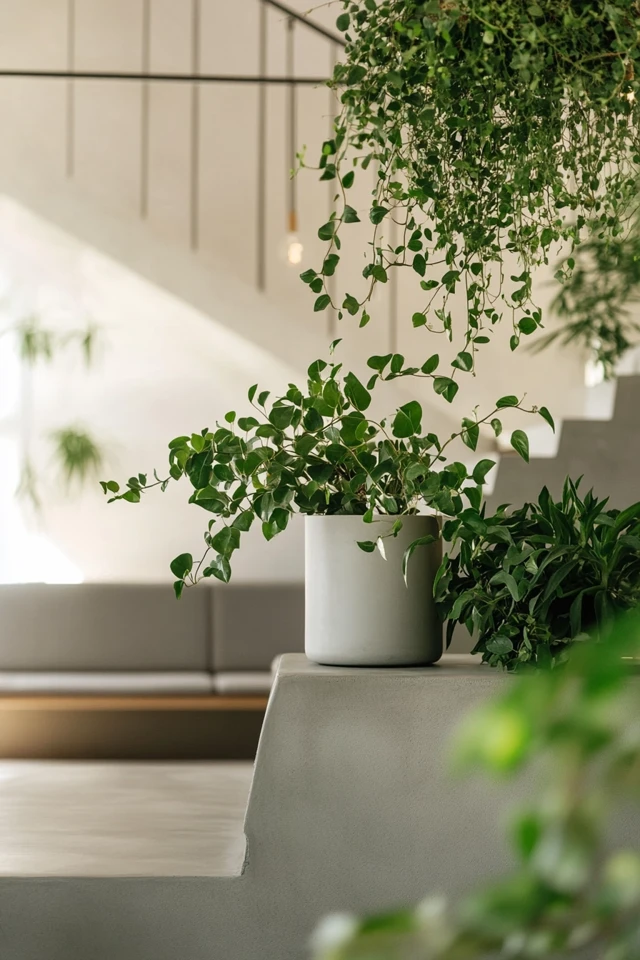
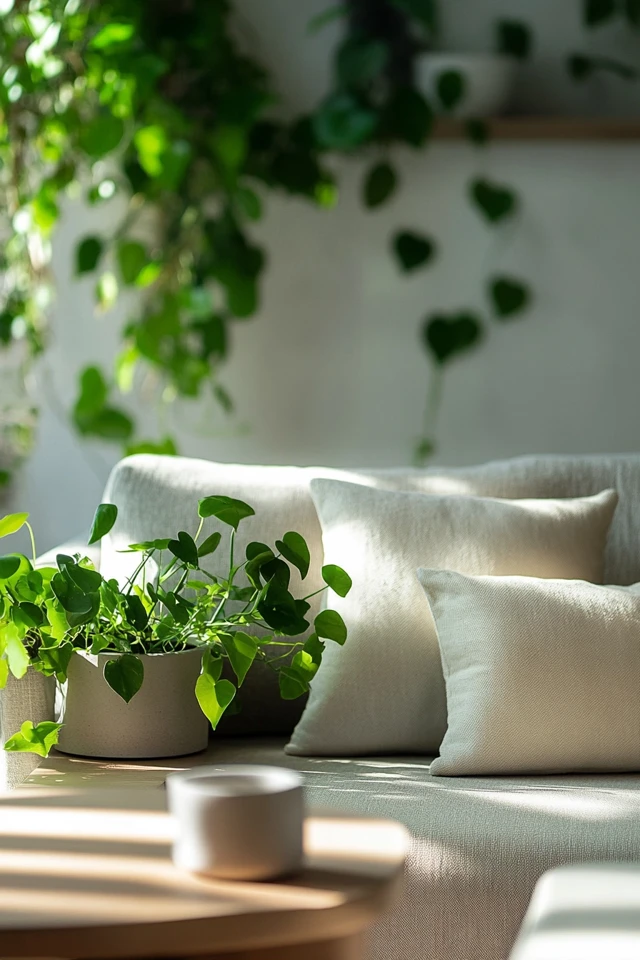
Conclusion
Incorporating greenery into minimalist decor is a beautiful way to soften the aesthetic, add natural warmth, and promote a serene atmosphere. Whether you opt for a single statement plant, a cluster of small succulents, or a full living wall, the key is to keep it simple and intentional.
By choosing the right plants, planters, and placements, you can transform your minimalist space into a vibrant, calming sanctuary that connects you to nature while maintaining its clean and uncluttered appeal.
FAQs
1. What plants are best for minimalist decor?
Low-maintenance plants like fiddle-leaf figs, snake plants, pothos, and succulents work beautifully in minimalist spaces due to their simple shapes and clean lines.
2. How can I care for plants in a minimalist home?
Choose plants that suit your light and humidity conditions. Water them sparingly and dust the leaves regularly to keep them looking fresh.
3. Can I use artificial plants in minimalist decor?
Yes, but choose high-quality faux plants with realistic textures. Place them in modern, understated planters for a more natural look.
4. How do I avoid clutter when adding plants?
Stick to a few well-chosen plants rather than filling the space with greenery. Use planters and arrangements that align with your overall design.
5. Can I use hanging plants in a small minimalist space?
Absolutely! Hanging plants like pothos or string of pearls save floor space and add vertical interest without cluttering the room.

